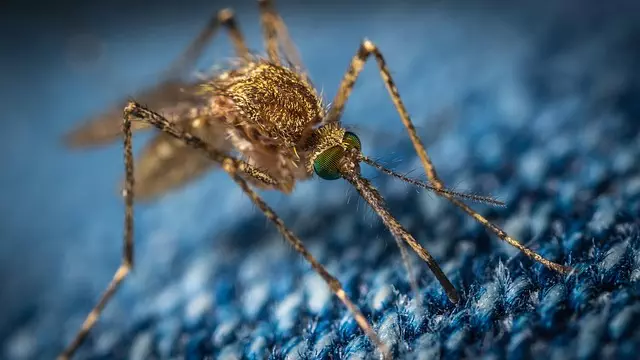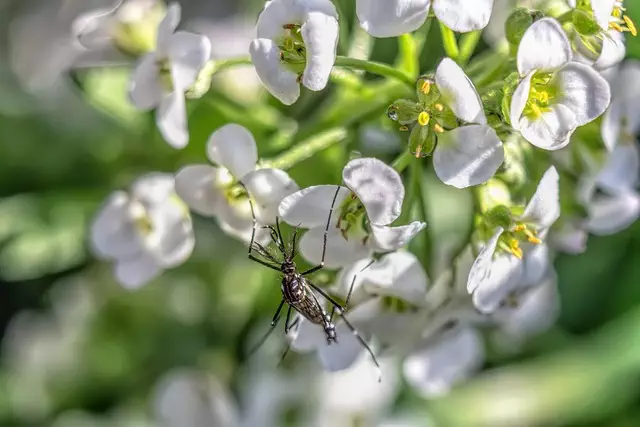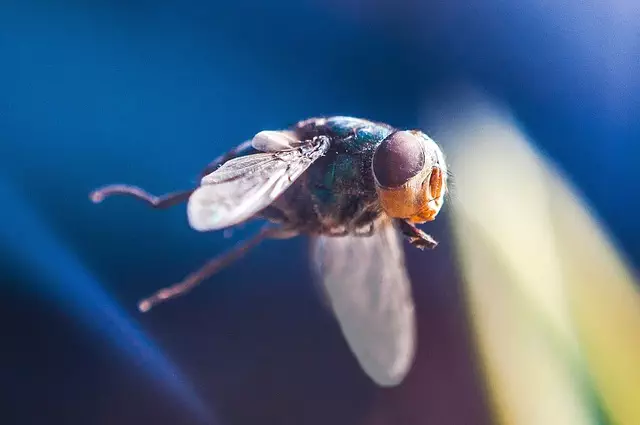To achieve effective mosquito and tick control, understand their behaviors: breeding in stagnant water and attracting carbon dioxide (mosquitoes) or sensing body heat/chemicals (ticks). Utilize strategic interventions like eliminating breeding sites, repellents, protective clothing, and natural alternatives. Natural repellents like citronella, lavender, and peppermint oils provide safe, eco-friendly protection. Plant-based solutions with herbs like citronella and lavender create insect-free outdoor spaces. Physical barriers like netting and screened windows/doors significantly reduce pest entry. Eco-friendly mosquito traps attract and trap mosquitoes without harming non-target species. Natural pesticides derived from plant, mineral, and bacterial sources offer potent alternatives to chemicals, needing proper usage guidelines for safety. Community efforts focusing on drainage systems, removing stagnant water, and awareness campaigns are crucial. Proactive monitoring and tracking of insect populations through traps, pheromone systems, and breeding ground inspections help control mosquito and tick populations.
In the quest for effective yet non-toxic mosquito and tick control, understanding these pests’ behavior is key. These bloodsuckers thrive in specific habitats and are attracted to carbon dioxide, heat, and certain chemicals. This article explores a comprehensive range of strategies, from natural repellents and plant-based solutions to physical barriers, eco-friendly traps, targeted applications, community efforts, and monitoring techniques. By employing these methods, we can minimize the impact on our health and the environment while effectively managing mosquito and tick populations.
Understanding Mosquito and Tick Behavior: Key to Effective Control

Understanding the behavior of mosquitoes and ticks is a fundamental aspect of effective mosquito and tick control. These insects are highly adaptable and possess intricate life cycles, making them challenging to manage. Mosquitoes, for instance, breed in stagnant water, so eliminating these habitats is crucial. They are also attracted to carbon dioxide and certain chemical cues, which can guide the placement of traps and repellents.
Ticks, on the other hand, often reside in tall grass or shrubs, waiting for suitable hosts to pass by. They can sense body heat and specific chemicals, making them drawn to mammals and birds. Knowing these behaviors allows us to implement targeted strategies. For instance, maintaining proper landscaping, using protective clothing, and applying repellents can significantly reduce exposure to both mosquitoes and ticks.
Natural Repellents: A Non-Toxic Approach to Keep Pests at Bay

Natural repellents offer a safe and effective solution for mosquito and tick control, providing an alternative to chemical-based methods. Essential oils like citronella, lavender, and peppermint have been shown to deter these pests due to their distinct scents. These aromatic compounds can be applied topically or diffused in the environment, creating a protective barrier against biting insects.
Using natural repellents is an eco-friendly approach that minimizes health risks associated with synthetic chemicals. They are non-toxic and gentle on the skin, making them ideal for homes with children and pets. Additionally, these organic solutions can be easily incorporated into daily routines, providing long-lasting protection without harsh side effects.
Plant-Based Solutions: Utilizing Aromatic Plants for Mosquito Repulsion

Plant-based solutions offer a natural and safe approach to mosquito and tick control, leveraging the power of aromatic plants that repel these pests without harmful chemicals. Certain herbs and flowers contain compounds that mosquitoes find unpleasant, acting as a natural barrier against bites. For instance, citronella, known for its strong scent, has been used for centuries in outdoor candles and oils to keep mosquitoes at bay. Similarly, lavender, with its soothing aroma, is not only effective but also adds a pleasant fragrance to your surroundings.
Integrating these aromatic plants into your garden or outdoor spaces can create an insect-free haven. Planting them strategically around patios, decks, or gardens provides a natural solution for mosquito and tick control, allowing you to enjoy the outdoors without worrying about unpleasant bites. This eco-friendly method not only reduces exposure to chemicals but also promotes a healthier environment, making it a popular choice among those seeking sustainable pest management practices.
Physical Barriers: Netting, Screens, and Other Tactical Measures

Physical barriers are an effective way to prevent mosquitoes and ticks from entering living spaces, providing a crucial layer of protection in areas where these pests are prevalent. One common tactic is the use of netting, which can be installed over beds or outdoor seating areas to create a protective cocoon. These fine mesh nets trap insects while allowing air circulation, ensuring a peaceful night’s sleep free from bites.
Additionally, screens on windows and doors serve as physical barriers, blocking entry points for mosquitoes and ticks. Regular maintenance of these screens is essential to ensure their effectiveness, including repairing any tears or gaps that could allow pests to pass through. This simple yet tactical measure significantly reduces the risk of mosquito and tick control issues within homes and outdoor entertainment areas.
Eco-Friendly Traps: Luring and Capturing Mosquitoes Safely

Eco-friendly mosquito traps offer a safe and sustainable alternative for controlling these pesky insects, especially in areas where traditional methods may be harmful to the environment. These innovative devices use natural lure and trapping mechanisms to attract, capture, and eliminate mosquitoes without resorting to toxic chemicals. By luring mosquitoes with specific scents or carbon dioxide, these traps create an enclosed space that ensnares the bugs, ensuring their safe removal from the surroundings.
Unlike chemical sprays and insecticides, eco-friendly mosquito control methods are designed to target only the insects, minimizing the impact on non-target species, including beneficial insects and wildlife. This approach is particularly valuable for maintaining a healthy ecosystem while still effectively managing mosquito populations, thereby addressing both mosquito and tick control concerns in an environmentally conscious manner.
Targeted Applications: Natural Pesticides and Their Safe Use

In the realm of mosquito and tick control, targeted applications of natural pesticides offer a safer alternative to conventional methods. These organic solutions are derived from natural sources like plants, minerals, and bacteria, making them less harmful to humans, pets, and the environment. Essential oils from citronella, lavender, and peppermint are popular choices known for their ability to repel mosquitoes naturally, providing an eco-friendly approach to pest management without toxic chemicals.
The safe use of these natural pesticides is key to ensuring their effectiveness and minimizing potential risks. Following guidelines for dilution rates and application methods ensures that the active ingredients remain potent while reducing any adverse effects. Proper storage and disposal practices also play a crucial role in maintaining the integrity of these products, fostering a harmonious balance between human health and environmental preservation in the fight against mosquitoes and ticks.
Community Efforts: Preventing Breeding Grounds and Promoting Awareness

Community efforts play a pivotal role in effective mosquito and tick control. One of the primary strategies is to prevent breeding grounds by eliminating stagnant water sources, as mosquitoes lay their eggs in standing water. This can be achieved through regular inspection and maintenance of drainage systems, removing potential habitats like old tires, buckets, or clogged gutters, and promoting proper waste disposal practices within neighborhoods.
Awareness campaigns are also crucial to educating residents about the importance of these preventive measures. By spreading knowledge about mosquito and tick control, communities can empower individuals to take proactive steps in their homes and yards. Simple actions such as using mosquito nets, installing screens on windows and doors, and applying EPA-approved repellents can significantly reduce exposure to these pests, fostering a healthier and safer environment for all.
Monitoring and Tracking: Staying Ahead of Insect Populations

Effective mosquito and tick control starts with monitoring and tracking insect populations. By understanding where and when these pests are most active, homeowners and professionals can implement targeted strategies to mitigate their presence. This proactive approach involves setting up traps in strategic locations around properties, using pheromone-based monitoring systems, and regularly inspecting environments that may foster breeding grounds.
Regular checks for standing water—a primary breeding site for mosquitoes—are essential. Additionally, tracking the migration patterns of both mosquitoes and ticks helps anticipate their spread and adjust control measures accordingly. This continuous surveillance is key to staying ahead of insect populations, ensuring a safer and more comfortable outdoor experience for folks across various settings.
